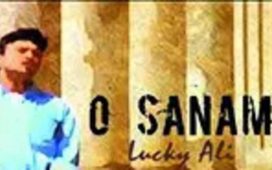Regardless, I was determined to go. Even the horrible stampede at New Delhi Railway Station didn’t dissuade me from going. (The stampede at Allahabad on mauni amavasya was preventable. The fact that it didn’t recur points to the fact that authorities, when alert enough, can keep things under control.) Perhaps, the river was already calling out to me.
From the holy dip at Prayagraj, we travelled to Banaras, where sadhus moved after the main bathing days, staying until Shivratri before returning to their respective sthans – Kedarnath Baba to Kedarnath, Kamakhya Mata to Kamakhya, and others to places like Mathura, Gujarat, and Rohtak.
Banaras, already a spiritual heavyweight, now really felt like an intellectual jam of Hindu thought and philosophy. It actually reminded me of literature festivals. At lit fests, writers, scholars, intellectuals come together at one venue for a week. At a religious fest, spiritualists do the same. The common thread is, well, existentialism. To be born or to die in Banaras is considered a blessing. These ghats, to Hindus, are sacred beyond measure.
Naga sadhus, with their ash-covered bodies and detachment from material life, attract the most attention. Some see themselves as defenders of the Hindu faith. Sadhus in saffron tend to be a gentler bunch. Among them was ‘New Baba’, who kept a black puppy, Kali. I asked him why he was called New Baba. ‘Because I am newly inducted… and I represent a new approach to spirituality,’ he said, quite logically. He had a quiet magnetism. People from different walks of life lingered by his side just a wee bit longer.
Another sadhu told me he had lost his mother young, and that the Ganga was now his mother. He lived on the ghats year-round. ‘The Ganga is the most beautiful river in the world. There is no river like it,’ I told him. ‘It’s not a river. It’s a mother,’ was his reply.I still saw it as a river, just as he saw it as a divine personification. And yet, in that moment, we both respected each other’s truths. Both beauty and maternal qualities are subjective, shaped by what we seek in them. That is what I enjoy about these spontaneous, authentic exchanges – when perspectives meet without imposition, when belief is expressed without needing to be defended.Small acts of kindness lingered with me. Sadhus would call beggars over and give them money from the alms they received. The stall that made me Maggi refused to keep the change.
On the Rajdhani back, I noticed people carrying posters of the UP government as souvenirs. Cutouts of the prime minister and chief minister as faces of the Kumbh were everywhere. It was a moment for the state and central governments responsible for the administration, and it was only natural that they made the most of it. What struck me, though, was the contrast in their images – Adityanath beaming, almost laughing, Narendra Modi looking solemnly at us.
It reminded me of one of those videos that had gone viral from Kumbh: Adityanath and the UP cabinet splashing in the Sangam waters, grown men throwing water at each other like children. There was much hullabaloo from some quarters – the usual fingerwagging about making a spiritual act ‘frivolous’.
But why should everyone have the same sombre relationship with their gods, rivers, parents – or even with life itself. Some do, some don’t. The Ganga accepts all who come to her ghats. A pilgrimage here will leave everyone with a personal takeaway. It certainly left me with mine.











